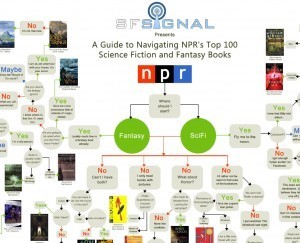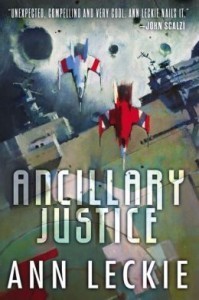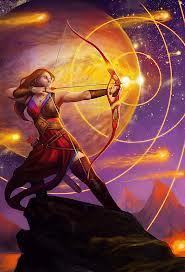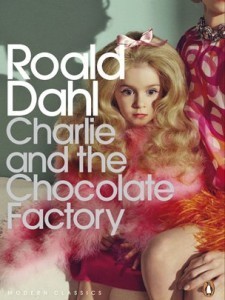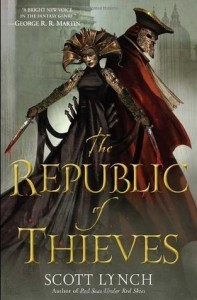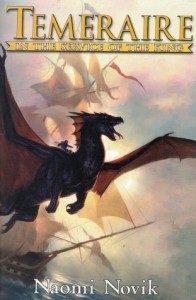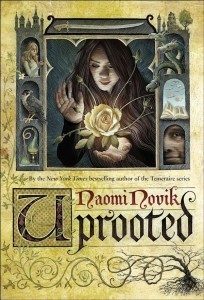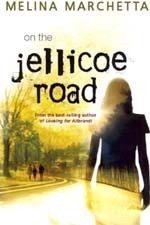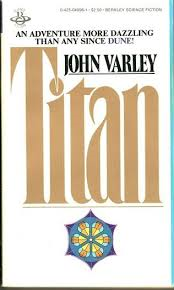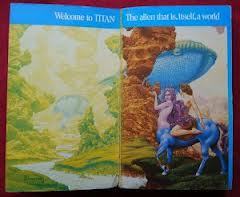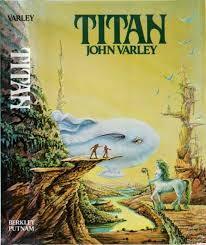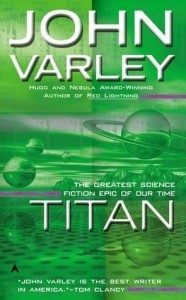Rachel Neumeier's Blog, page 364
August 19, 2014
Top 100 SFF books flowchart
Of course we could argue all day (and all year) about what REALLY belongs on a list of the Top 100 Best SFF Novels.
But no one is going to argue that this infographic flowchart isn’t the neatest thing since sliced bread.
I’m going to try to post it here and see if it works:
Okay, yeah, I think I got just part of it. Click through for the real thing and then click on the flowchart to blow it up. I can just about guarantee you will enjoy it.
My favorite bit so far:
SFF? –> No, I’d rather not be seen in that area of the bookstore –> Prefer a drama? –> Yes –> Romance or Overcoming the odds? –> Romance –> Like a little time travel with your love story? –> No –> Tough
And then, of course, we get two suggestions for romances with time travel. I just got a kick out of the “tough”.
There are a lot of funny bits in this flowchart — I like the flowchart itself a lot more than I like the list of “best 100 titles” included on the flowchart. Ugh, Animal Farm. But the flowchart, yeah, that’s a real work of art.

Plantar faciitis checklist –
So, sometimes you really don’t need to see a doctor to confirm your utterly typical case of fill-in-the-blank. For example, check all that apply:
Are you a woman?
Middle aged or older?
Do you experience pain in or near the heel of one foot?
That is worst in the morning directly after getting out of bed?
That is also worse when you get up after sitting down for an extended period?
That improves when you walk on it for a few minutes?
That particularly improves if you wear athletic shoes for an extended period?
After wearing athletic shoes all day for two days, do you find the pain has greatly improved?
Do you ordinarily go barefoot a lot?
Does the pain seem worse when you have been barefoot for a while?
When you wear shoes, do you often wear high heels?
Did you develop a problem with your right hip ten months ago so that you have been standing with all your weight on your left foot for that whole time, and now the heel pain is exclusively in your left foot? (I know, this particular category is just for me.)
Anyway, straight checkmarks right down the list for me. Thus my personal diagnosis: plantar faciitis. I am really happy that wearing shoes indoors and out all day has reduced quite crippling pain to near-zero pain. In just days. Evidently many people don’t respond that fast to a change in footwear. There are exercises one is supposed to do, but I confess I have not done them because the shoes alone seem to be sufficient.
Although, yes, wearing shoes at home in the summer is just *wrong.* Hopefully by next summer the problem will have resolved completely.
Incidentally, apparently lots of people do develop plantar faciitis, men and women both. It’s just more common in women.
Anyway, if any of you happen to be experiencing foot pain of this type and wondering if you should do something about it, I suggest a quick change in footwear and maybe you can head the problem off at the pass. I have had pain for just a minute or two first thing in the morning for a couple of years before the problem suddenly got much worse about two weeks ago and sent me to Google. Regular athletic shoes have been great, but I ordered slippers and two pairs of work-appropriate shoes from a brand called Orthoheel. I’m hoping these also work because I hate wearing shoes indoors at home, and I’m really uncomfortable wearing athletic shoes to work.
I have suddenly come up with a new hypothesis, btw. I think I may have some sort of genetic issue that affects connective tissue, because I sure seem to have a lot more than my share of joint problems. To date: jaw, hip, knee, neck, lower back, thumb, other knee, the mysterious hip thing reappearing in a slightly different and more annoying form, ankle, and now foot. I know practically everybody over thirty can check off one or another item on that list, but it seems like an awfully extensive list for one person who isn’t even fifty yet.
Not that I mean to complain.
Okay, yes, I totally mean to complain.

August 18, 2014
2014 Hugo Winners!
Most importantly, ANCILLARY JUSTICE won the novel category! Yay! Which is to say, yes, right, I hadn’t read any of the other candidates, but I was pretty sure that this one should win and that the SERIES Wheel of Time shouldn’t — I just don’t agree that it was ever truly eligible. But so many readers grew up with it, I was a bit nervous it might win.
But no. Justice prevailed. Nothing else even came close. Ballot details are here, if you’re interested.
Congratulations to Ann Leckie, and I’m definitely looking forward to the sequel this fall.
The other categories for written work:
BEST NOVELLA — “Equoid” by Charles Stross (Tor.com, 09-2013)
BEST NOVELETTE — “The Lady Astronaut of Mars” by Mary Robinette Kowal (maryrobinettekowal.com/Tor.com, 09-2013)
BEST SHORT STORY — “The Water That Falls on You from Nowhere” by John Chu (Tor.com, 02-2013)
I have no opinion about any of these because I didn’t read any nominee in any short fiction category. Except I believe that Kowal story was nominated last year and disqualified (incorrectly imo) because it was first published in audio form. I thought it was screwy to disqualify it for that reason. Who cares what medium the story is published in? So I’m glad to see it was nominated in print form this year, and won. Good.
Also: Julie Dillon won the Hugo for professional artist, and good for her! I like her swirly style and bright colors.

August 17, 2014
The very worst cover ever?
I saw this a couple of days ago but just remembered it. I’m sure you will all want to admire the very worst cover that a great book was ever subjected to in the history of mankind:
“This new image for Charlie and the Chocolate Factory looks at the children at the centre of the story, and highlights the way Roald Dahl’s writing manages to embrace both the light and the dark aspects of life,” said a statement from Penguin.
This article from the Washington Post includes this snippet:
To Tony Ross, a former art director at District-based Mage Publishers who teaches a class on jacket design for the D.C. Public Library, it’s a particularly book-ish perspective. The modernization of a beloved children’s story, even if it goes no deeper than the cover art, gets to the heart of some reader anxiety — worries that the world is changing, and the book industry along with it.
The classics “are sort of these touchstones for people,” Ross said.
Oh, really? That’s why people hate this cover? Because it symbolizes the changing world and the idea of change makes peopleanxious? Not you, though, buddy, because you are so enlightened and cool you don’t get anxious at the thought of change, is that right?
Funny, I would have assumed that everybody hates this cover because it:
a) has absolutely no relationship to anything in the story
b) implies the book is about a creepy doll that comes to life and kills people, or something
c) makes it seem as though the book is making a statement about the modern sexualization of childhood
d) HAS ABSOLUTELY NO RELATIONSHIP TO ANYTHING IN THE STORY.
But maybe that’s just me.
CHARLIE AND THE CHOCOLATE FACTORY has a dark edge to it, sure. But this cover suggests the wrong dark edge and does it in the wrong way. It’s inexplicable to me that anybody in Penguin’s marketing department could possibly have thought that this cover was appropriate — and even more inexplicable that anybody in the world would defend the cover now that it’s been unveiled.
Roahd Dahl must be spinning in his grave.

August 15, 2014
Recent Reading: THE REPUBLIC OF THIEVES by Scott Lynch
I read this book recently because my computer suddenly crashed and hey, look, all of a sudden I had free time. (My younger brother the computer god listened to me explain what had happened, and told me to take the battery out and put it back in, and thus I luckily didn’t have nearly as much free time as I’d feared. But I had already started THIEVES by then.)
Anyway, I’m really enjoying the KEHERA revision, so I was able to work on that and read this at the same time. Well, not actually QUITE the same time, obviously, but I could put THIEVES down to work on KEHERA without going nuts.
Writing Update: I’ve cut 40 pages! Woo hoo! This is a long book, so I’m not sorry to see some pages vanish. They are stored in a separate file in case I want them back, but I suspect they are gone for good. I am also tweaking here and there, and the beginning is completely different as what used to be the third chapter now opens the book. There’s lots to do, but I am definitely making progress.
Anyway: THE REPUBLIC OF THIEVES
So, here’s Lynch’s series so far:
The Lies of Locke Lamora (2006)
Red Seas Under Red Skies (2007)
The Republic of Thieves (2013)
It’s been a while since I read THE LIES OF LOCKE LAMORA – I read it the year it came out, I think, which as you see was a while ago. Then the second book came out promptly; I wonder what the hold up was for this third book?
This is relevant because this is one series where I don’t really feel like going back and re-reading the earlier books before starting the newest. I’m not sure why I didn’t want to re-read this series. It’s not because I don’t like the earlier books enough to re-read them; I do like them. A lot. Maybe because Lynch is writing such dense, long stories. Maybe because so much goes wrong in LIES and then even more stuff goes wrong in RED SEAS and it’s painful to watch Locke and Jean get basically crushed. If you do read this trilogy, you will definitely want THIEVES on hand so you can go on from RED SEAS right away. I will say that the end of THIEVES leaves everyone in a better position than at the end of RED SEAS, not that that’s hard.
I will also say: you don’t have to re-read the first two (or read them at all) to enjoy this book. Lynch did clever things with THIEVES so it works on its own.
Now, if you haven’t yet read this trilogy, I should say that LIES is fairly self-contained, but RED SEAS ends on a cliffhanger. That cliffhanger is resolved early in THIEVES, which is again fairly self-contained, but with threads left dangling for what is plainly going to be a fourth book. I really do not know how many stories Lynch has planned in this world, but I can definitely say that the series can’t be ending with THIEVES. But THIEVES does give the reader enough closure that you don’t really have to worry about it.
Okay, now:
The characters: Locke, Jean, and Sabetha are the three main characters in THIEVES. Locke has been the primary pov protagonist all along, of course, and he still is here. The pov is a fairly close third person and is nearly always from Locke’s pov. Jean is Locke’s close friend and ally. Sabetha is Locke’s love interest, who makes it totally clear that she is actually her own person and not The Love Interest and that her world does not revolve around Locke. I think readers are going to love Sabetha. I mostly did, except that she does have a definite tendency to fly off the handle and rush away when confronted with unsettling new explanations about, uh, things. This is not a tendency I much admire. I actually like Jean’s steadfast loyalty quite a bit more than Sabetha’s volatility. I like Locke nearly all the time, especially his absolute refusal to allow Sabetha to put down Jean even though he’s so obsessed with winning her heart. All three characters are clever, witty, competent and fairly amoral but also basically decent people. They may be thieves, but they are not antiheroes.
The plot: THIEVES is a caper novel. Two caper novels, actually: the one set in the past, which concerns Locke, Jean, Sabetha, and two other young people who get roped into joining a theatrical troop putting on a play called The Republic of Thieves; and the one set in the present, which concerns Locke and Jean competing with Sabetha to see which rival political party they can set up to win an election in a different city-state. (Yes, really.) Both capers are clever. Both involve serious obstacles, including obstacles I didn’t see coming at all; both involve lots of quick thinking and action.
I enjoyed both stories very much – about equally, in fact – which is hard to pull off; I don’t need to mention how much weaker the book would have been if one of the two plotlines had been substantially less interesting than the other. On the other hand, I can’t really say that the two stories seemed to play off each other; to me, they might as well have been sorted out and published separately. On the other other hand, I might be missing something subtle. I was too much engaged in the reading experience to be very analytical.
The world: Lynch can really layer depth and texture into his world. This trilogy is fairly gritty and somewhat dark, but far from grimdark – more like Brent Weeks than Joe Abercrombe, if that orients you at all. We get broad sketches to introduce a city, then tons of details layered in as we go.
Lashain was famous as a city where anything could be bought and anything could be left behind. By the grace of the region, the city’s highest and thinnest order of nobility, just about anyone with cash in hand and enough of a pulse to maintain semiconsciousness could have their blood transmuted to a reasonable facsimile of blue.
From every corner of the Therin world they came – merchants and criminals, mercenary captains and pirates, gamblers and adventurers and exiles. As commoners they entered the chrysalis of a counting house, shed vast quantities of precious metal, and as newborn peer of Lashain they emerged into daylight.
Because of the novelty of this purchased respectability to those who brokered it for themselves, Lashain was the most violently manners-conscious city Jean Tannen had ever visited. Lacking centuries of aristocratic descent to assure them of their worth, the neophytes of Lashain overcompensated with ceremony.
That’s the broad sketch; then the details pile up over that. I must say, I’m glad I don’t live in this world. I wouldn’t want to visit. But depth and texture ? Oh, yes. Every city is different from every other city; the people who live in those cities are distinctive; you can just feel the history of the world stretching waaaay back into the distant unrevealed past.
The writing: Okay, listen to this tidbit from THIEVES, which made me laugh:
“I require a vacation from all of you, but I’m not leaving Camorr. You five will be making a journey to Espara. I’ve arranged work there to keep you busy for several months.”
“Espara?” said Locke.
“Yes. Isn’t it exciting?”
The room was quiet.
“I thought that might be your response. Look, I tucked a pin into my jacket for this very moment.” Chains drew a silver pin from one of his lapels and tossed it into the air. It hit the floor with the faintest chiming clatter.
“One of those expressions I’ve always wanted to put to the test,” said Chains.
Lynch has a deft hand with humor. There are so many great tidbits, I could hardly bookmark them all! I think I did laugh out loud when Sabetha whispers to Locke, late in the book, “I keep wondering, are we smarter than that woman’s chicken?”
Okay, trust me, in context, that is a lol line.
In one important way, I think Lynch was especially clever to alternate sections from the past, starting when Locke was just a kid but mostly from a period when he was about sixteen, with sections taking place in the present, when Locke and the others are in their twenties. This is what works so brilliantly if, like me, you read the first couple books some time ago and don’t really want to re-read them just now; because of the scenes set in the past, the reader really doesn’t have to remember much about the other two books to get oriented in this one. I think this book would also work fine if you haven’t read the other two at all — though I think it works better if you have.
Long and dense but lively and fast-paced, these are great novels. I think I like this one the best of the three. I’m definitely on board for the next book, whenever it appears.

August 14, 2014
Oh, hey, Naomi Novik is starting a new series!
Has everybody read the Temeraire series?
In my humble opinion, the first book is excellent and then the sequels gradually trail off into less-good and wind up not really worth bothering with as we go on a forced march to EVERY DAMN CONTINENT IN THE WORLD except Antarctica. But that’s just me, no doubt some people love the Australia one, or heaven help us, the South American one. I must confess, I haven’t read the latest installment.
And don’t get me started on how impossible it is to use elephants as a domesticated food animal. Gestation period of 22 months and slooooow growth; that is simply not going to work at the rate dragons would eat their way through a herd. Not that quibbling over ecological implausibility is reasonable, because I doubt dragons would be sustainable anywhere in the world, it’s just that the elephant thing brought me to a sharp halt.
Anyway! Temeraire aside, this is exciting:
Here’s the synopsis:
“Our Dragon doesn’t eat the girls he takes, no matter what stories they tell outside our valley. We hear them sometimes, from travelers passing through. They talk as though we were doing human sacrifice, and he were a real dragon. Of course that’s not true: he may be a wizard and immortal, but he’s still a man, and our fathers would band together and kill him if he wanted to eat one of us every ten years. He protects us against the Wood, and we’re grateful, but not that grateful.”
Agnieszka loves her valley home, her quiet village, the forests and the bright shining river. But the corrupted Wood stands on the border, full of malevolent power, and its shadow lies over her life.
Her people rely on the cold, driven wizard known only as the Dragon to keep its powers at bay. But he demands a terrible price for his help: one young woman handed over to serve him for ten years, a fate almost as terrible as falling to the Wood.
The next choosing is fast approaching, and Agnieszka is afraid. She knows—everyone knows—that the Dragon will take Kasia: beautiful, graceful, brave Kasia, all the things Agnieszka isn’t, and her dearest friend in the world. And there is no way to save her.
But Agnieszka fears the wrong things. For when the Dragon comes, it is not Kasia he will choose.
I’m definitely up for this. I loved loved loved the first Temeraire book, I liked some of the sequels, and I look forward very much to seeing what Novik will do with a dark fairy tale.

August 13, 2014
What is an ebook worth?
A post from Chuck Wendig at Terrible Minds: what is an ebook worth?
Chuck is one of the few sensible voices chiming in on the ongoing Hatchette / Amazon mudwrestling contest. I think his post about ebook pricing hits an important nail on its head. Actually, I think he’s been hitting nails dead on all through the H / A tussle — it’s been a pleasure to read his posts about this.
I could sum this particular nail up in about fifteen words, though: Stuff is worth what people are willing to pay for it. Ebooks included. Period. No need for a long post about it.
I’m tired of people trying to claim that ebooks are especially overpriced compared to other things. Do you know how much your vet pays for that rabies shot for your puppy? The one that cost you $25 or whatever? About $0.25. That is because you are paying for more than the actual shot. I’m sure no one is surprised by this. Good God, this is kindergarten economics, here.
It was Scalzi who recently put it this way: “You know what, if you’ve ever paid more than twenty cents for a soda at a fast food restaurant, or have ever bought bottled water at a store, then I feel perfectly justified in considering your cost of production position vis a vis publishing as entirely hypocritical. Please stop making the cost of production argument for books and apparently nothing else in your daily consumer life.”
Yeah. Pick anything. Pop-tarts! I bet they cost only pennies to produce. Hey, I wonder how much it *actually cost* those guys at the tire place to patch my tire this morning? I bet I got totally ripped off! Except no, because that’s not how it works here in the real world.
Frankly, I thought Hatchette’s CEO was pretty persuasive with this letter. Because it is silly on its face to think that all ebooks are worth the same amount, or no ebooks are ever worth more than $9.99. What rot. If people are willing to pay $14.99 for a particular ebook, then they are, and it’s actually, objectively worth more than other ebooks. If that’s just because lots of people know about it and no one has ever heard of an equally great book recently self-published by some guy, well, having lots of people know about your book objectively increases its actual worth.
Obviously Ilona Andrews’ latest Kate Daniels book is worth more than $9.99, because lo, there it is on Amazon right now for $10.99. Somebody plainly thinks people are willing to pay that extra buck for this book, and I’m sure they’re right. I may eventually buy it for that price myself, even though I really want the mass market paperback because that’s what I have the rest of the series in.
I’ve got books out from Hatchette. I like Hatchette, though not as much as I like Random House just now, since I have a current contract with the latter. I love my contract with Random House. (I love my agent.) In the near future I’ll self-publish and there I’ll be, looking into what Amazon can do for me, and I expect that I’ll like Amazon well enough, too.
Anyway, I wish more people would take their tone from Chuck Wendig and John Scalzi on this. It’s refreshing to see that neither is startled to find that Giant Corporations are interested primarily in their own bottom line, and both are pointing out that traditional Big Five publishing is actually a good deal for some writers; self-publishing a good deal for others; and swinging both ways a good deal for others.
Okay, I expect that’s the first and last time I’ll mention the H / A kerfuffle here. If you weren’t aware there was This Thing going on in the first place, fine, go back to ignoring it. I doubt very much the world is going to end for writers or readers however it comes out.

August 11, 2014
Recent Reading: Melina Marchetta
I’m dreaming of the boy in the tree and at the exact moment I’m about to hear the answer that I’ve been waiting for, the flashlights yank me out of what could have been one of those perfect moments of clarity people talk about for the rest of their lives. If I were prone to dramatics, I could imagine my sighs would have been heard from the boundaries of the school to the town down below.
The question begs to be asked, “Why the flashlights?” Turning on the light next to my bed would have been much less conspicuous and dramatic. But if there is something I have learned in the past five years, it’s that melodrama plays a special part in the lives of those at the Jellicoe School.
So, JELLICOE ROAD.
This story isn’t quite what I expected. For one thing, there’s a touch of magic in it, though it’s a contemporary YA, not a fantasy novel. For another, it reads very much indeed like a dystopian novel, although it’s not that either. Plus, there’s a definite mystery wrapped around the main story. Here’s the back cover copy:
Taylor is leader of the boarders at the Jellicoe School. She has to keep the upper hand in the territory wars and deal with Jonah Griggs – the enigmatic leader of the cadets, and someone she thought she would never see again.
And now Hannah, the person Taylor had come to rely on, has disappeared. Taylor’s only clue is a manuscript about five kids who lived in Jellicoe eighteen years ago. She needs to find out more, but this means confronting her own story, making sense of her strange, recurring dream, and finding her mother – who abandoned her on the Jellicoe Road.
The moving, joyous and brilliantly compelling new novel from the best-selling, multi-award-winning author of Looking for Alibrandi and Saving Francesca.
Which is all very well, but as you can see from the opening, the protagonist, Taylor, is dreaming about a boy when the story opens. This particular dream, and others, continues to be important through the story and particularly at the end. This is what I mean by a touch of magic.
Also, Jellicoe School? The codified warfare between the students of the school, the townies, and the military cadets who spend a few weeks camping nearby in the summer . . . very dystopian feel to this element of the story. The adults don’t know what the heck is going on, even though the war gets pretty violent at times. No actual fatalities, but if the kids hadn’t gotten this all straightened out, I can hardly see how they would have avoided real trouble eventually.
The story is not exactly about sorting out this war thing, though. It’s about Taylor getting her own life in order by working out her relationships to her friends at the school, to Chaz Santangelo (one of the Town kids) and most of all Jonah Griggs (leader of the Cadets). It’s also about Taylor sorting out her relationships with her mother, who abandoned her at the school years ago, and Hannah, who has been more or less acting as a mother to her since.
So it’s a relationship story. Obviously. Except it’s really two stories braided together, because the story of what happened to Taylor’s mother and Hannah and their friends seventeen years ago is the frame story and also braided through the current-day story. Working out what happened to that earlier group of friends gives JELLICOE ROAD a definite mystery element as well. So it’s complicated.
My overall reaction: It’s a pretty dark story. I, unlike whoever wrote the back cover copy, would not have picked the word “joyous” to describe it. What happened seventeen years ago is horrifically grim, and as we find out more about the aftermath, it just gets grimmer. There is a happy ending to that story . . . sort of . . . but the best thing you can say about the contemporary story line is: Taylor and her friends may go through some tough times, but it is *nothing* to what happened to the older generation. And everyone does wind up in a better place at the end than they were in at the beginning, but . . . moving, yes, but joyous?
I actually disliked this story at first. I picked it up originally because of Chachic’s recommendation, Brandy‘s comments, and Maureen’s review and because the back cover copy sounded interesting. Two of the linked reviews (links now correct; sigh) refer to the confusing beginning. This is true, but it wasn’t a problem for me. What was a problem for me is that at the beginning, Taylor is incredibly self-absorbed. I know she was going through a lot, but I really disliked her. Then a friend of hers at the school calls her on that and from that point on, she starts to grow into a much more likeable person. By the end, I liked her a lot. The bit where she tells off Sergeant Santangelo for being angry at his son, Chaz, is one of my favorite scenes. I really enjoyed seeing Taylor grow up and seeing the relationships between her and her friends deepen. Plus, Jonah Griggs! His backstory is *grim*. His background with Taylor is . . . also grim, in unexpected ways. But how he and Taylor figure out what happened in the past and work out their current relationship – all that is pretty much perfect.
So, yeah, by the end, I loved this book. Since I was in the mood for emotionally intense contemporaries, I quickly picked up a couple more of Marchetta’s: SAVING FRANCESCA and THE PIPER’S SON.
This morning, my mother didn’t get out of bed.
It meant I didn’t have to go through one of her daily pep talks, which usually begin with a song that she puts on at 6:45 every morning. It’s mostly seventies and eighties retro crap, anything from “I Will Survive” to some woman called Kate Bush singing “Don’t give up.” When I question her choices, she says they’re random, but I know that they are subliminal techniques designed to motivate me into being just like her.
But this morning there is no song. There is no advice on how to make friends with the bold and the interesting. No twelve-point plan on the best way to make a name for myself in a hostile environment. No motivational messages stuck on my mirror urging me to do something that scares me every day.
There’s just silence.
SAVING FRANCESCA is about Francesca’s life falling apart when her mother, Mia, drops into an episode of dense clinical depression, and about the way deep friendships can help you cope with personal disaster.
This is another one I didn’t much care for at first, partly because Mia’s little motivational messages on the mirror etc etc would have driven me utterly insane if she’d been my mother – God save me from pushy self-help coaches – and partly because I think of depression clinically and was horrified with the way Mia’s husband and family refused to even consider medical treatment. I could just *see* the connections between Mia’s neurons withering as her husband protested that medication is bad and Mia wouldn’t want to take, gasp, pills. Honest to God, it made me want to smack him. What if she had diabetes, would he be all, “Can’t use artificial insulin, medicine is bad for you”? Of course not. I was all This is a *progressive* disease, you jackass, it only gets worse, you want to treat it *aggressively* right from the start.
If I’d been there, I’d have made Mia’s husband read Kramer’s AGAINST DEPRESSION first thing and done everything possible to get him over the idea that Treating Depression is Bad. And if I’d been writing the story – it’s not the type I would write, though – but if it was, I’d have had them try antidepressants and had the meds simply not work. Sometimes they don’t, but damn, people, of course you should try them, not just reject the whole idea out of hand. Hey, did you all know that depression is so closely linked to heart disease that if it caused no emotional suffering at all, it would still be one of the biggest health issues today?
Of course none of this is the focus of the story. This is Francesca’s story, not Mia’s. I did my best to set all that aside, pretty successfully. I had a lot of sympathy for Francesca. Naturally Francesca is the lynchpin of the book, Francesca and her relationships with her brother (I loved this) and her father (I believed in this) and her friends (the main focus).
I could just see how Francesca had tried to erase her own personality in order to get along at her old school; I could see why she resisted making friends at her new school; I *really* enjoyed seeing her build friendships with Tara and Siobhan and Justine – and Thomas Mackee, James Hailler, and Will Trombal – almost despite herself. Francesca was a very sympathetic protagonist from the beginning – and very likeable, too, by the end. I would have loved to find out more about Jimmy Hailler. He was the most intriguing secondary character for me. The way he pushed himself into a relationship with Mia was unexpected; who in his family suffers from something, and what? We never find out.
Unlike JELLICOE ROAD, there is absolutely no magical element to this story. No mystery. No dystopian feel. This is a straight-up contemporary; an emotionally-intense tightly focused relationship story. It’s genuinely moving, and I wonder if I’m the only reader who finds the relationship between Francesca and her father the most moving element? Perhaps because that relationship is the most shattered at the beginning, and the hardest to re-build.
Anyway, after reading this one, I immediately moved on to a companion book, a story set several years later, with Thomas Mackee as the protagonist: THE PIPER’S SON. This one differs from the other because there is a secondary pov protagonist, Georgie, Thomas’ aunt, who is in her forties and pregnant. There’s no medical problem with the pregnancy; the problems are all with the relationships.
Both Thomas and Georgie and their whole extended family are dealing with tragedy: the stupid, senseless loss of Thomas’ uncle, Georgie’s brother, in a terrorist bombing in London. This happened some time ago, but the family is far from over it. The loss echoes an earlier tragedy that is too complicated to go into but that has affected everything and that frames this whole story.
Georgie best expresses what this is like:
The grief hits her hard one day. The way it can’t be controlled. The way that yesterday can be good and so can the day before that, but then today comes and she’s back to zero. How she can’t type words into her computer or even press the in-box for her mail. The effort it takes to walk. How words can’t form in her mouth and how her blood feels paralyzed. For the first time since she can remember, she finds herself dialing Sam’s number but hangs up the moment she hears his voice because too much emotion goes into keeping Sam at an arm’s distance.
I really like that. It’s hard to put that kind of intensity into words. Marchetta is very good at this.
This story is, again, about the importance of friendship. Also, even more so, it’s about the importance of forgiveness. How Georgie puts her relationship with Sam back together, how Thomas puts his relationship with his father back together, how Thomas rebuilds the broken friendships between himself and Francesca and (most of all) Tara – forgiveness is the soul of this story. I loved the bit where Francesca et al haul Thomas off to see his mother, and I LOVED the bit at the end where Thomas finally catches up to Tara at the airport. Wonderful stuff there.
Of the three, THE PIPER’S SON is my favorite.
As it happens, I have a fantasy trilogy by Marchetta on my TBR pile right now. I’ll be really interested in seeing how that compares to her contemporaries, when I have time to read a trilogy. September, I expect. Not right now, because:
Writing update: I am just about to send the rough draft of KERI to my agent, after which I will take a real stab at completing the biiig revision of KEHERA before September. Then I WILL TAKE A BREAK. Except, granted, I will need to do a final editorial read-through of the Black Dog short stories and try my hand at the ebook conversion process, but! That may be annoying and tedious, but it cannot possibly eat my life the way pushing to finish / revise a book does.
Also! Update for the HOUSE OF SHADOWS sequel: the climactic scene, where I got stuck last January? Yeah, that unexpectedly worked itself out in my head a couple days ago, even though I haven’t given that WIP a single thought since I set it aside lo these many months ago. Who knows how these things happen? I think it should now be much easier to finish during the upcoming Christmas break. Yes, I took quick notes. I would hate to forget the shape of the new improved climactic scene.

Covers for Varley’s Titan –
Okay, Robert’s comment made me go hunting around. So, these are terrible quality, but they will give you an idea:
The mostly-white cover, which is the one I have:
The interior cover art from that same edition, which is indeed very nice:
And another edition, which is also pretty good:
All of these are superior imo to the extraordinarily boring green cover:
The centaurs and blimps and things are quite accurate. The nymph-like girl, perhaps a tad less so.

August 8, 2014
Past Reading: John Varley’s TITAN / WIZARD / DEMON
I actually did read some new-to-me books recently, especially during the Kansas City trip — I got into Melina Marchetta’s backlist: JELLICOE ROAD and SAVING FRANCESCA and THE PIPER’S SON. But I’m not sure yet what to say about them. They are all intense YA contemporaries and it took me a while to get into each one and I ended up loving each one, but, well, still putting my thoughts in order. Maybe over the weekend I will try to write something coherent about them.
Also, I must admit I’ve been re-reading the CHANUR series. Stealing time from actual projects with deadlines! But I couldn’t help it. I’m halfway through the third one. Yeah, you should definitely, but definitely, not start CHANUR’S VENTURE unless you have both THE KIF STRIKE BACK and CHANUR’S HOMECOMING in your possession. This is just one story chopped up into three random sections. As pointed out in the comments of the Chanur post, CHANUR’S HOMECOMING is not available in ebook although the others are, which is ridiculous and will hopefully soon be rectified, but if I were you and wanted these in ebook form, I would simply pick that one up used in paper and complete the ebook set later.
Anyway, thinking of CJ Cherryh leads me to John Varley. Most, maybe all of the authors who are Cherryh’s true contemporaries (started writing about the same time, were well-known at least for a time) are even more neglected today than she is, and imo Varley is the one who most ought to be dragged back into the light of day. Some of his work is like, I don’t know, a cross between Cherryh herself and Kim Stanley Robinson. Hah, well, sort of! He deals with big-scale stuff, fairly big scale anyway, but develops his characters a lot more than Robinson and also comes up with pretty cool nonhuman species.
Varley is still writing, but some of his more recent titles seem to be political thrillers or something, and I am not too interested in that kind of thing, so I haven’t read them. But Varley is a very good writer. He was already writing, in the late seventies and early eighties, SF books that are a perfect fit for today’s SF audience. His exploration of gender was especially cutting edge; I mean, his treatment of gender and identity still looks cutting edge today, which is remarkable. Here I’m talking about his short fiction mainly, but he did a lot with gender in his novels, too. And not in a ridiculously preachy This Is My Issue way, either; it was just something he worked with in his fiction.
Now, I actually have a good many of Varley’s short stories in various collections, but you all know I prefer longer fiction, and my hands-down favorite of his longer works is his Gaea trilogy.
TITAN (1979) – 300 pp
WIZARD (1980) – 360 pp
DEMON (1984) – 460 pp
This horribly boring cover is by no means an asset, but whatever, at least it’s not too off-putting. It is hard to imagine just what you would put on the cover, actually; using a view of Saturn gives you an extremely misleading idea of the story — this is not Spaceship Adventure — yet putting almost anything more relevant on the cover would give so much away. I’m sure it was a dilemma, but I would probably have picked something a bit more interesting if it were me.
So, the story: Cirocco Jones – a great name, I think – and her small crew are exploring the moons of Saturn and find an extra, too small to have been detected previously. Only this small moon turns out to be an artificial structure maintained by an entity called Gaea. Um, they don’t find out about Gaea right away, but I don’t think it will interfere with the reading experience if you know that part up front. Believe me, I’m leaving out *everything*, really. Anyway, the little moon contains an atmosphere on the inside, and thus its own extraordinary ecosystems and many different species living in them, though I’m sure Cirocco and her people would have been happier finding this out some other way than getting trapped and pulled into the living moon and, oh, call it extruded into the inside environment. So this is first a story about getting stranded in and then exploring a new world, and then it gets way, way more complicated from there. WAY more complicated, seriously.
As far as I’m concerned the story really starts about forty pages in, once the crew is inside Gaea. Here is a snippet from that part:
The pool was fed by a two-meter fall from a rocky stream which wound through a little valley. The huge trees arched overhead, completely blocking her view of the sky. She stood on a rock near the edge of the pool, trying to judge its depth, thinking about jumping in.
Thinking about it was all she did. The water was clear, but there was no telling what might be in it. She jumped over the ridge which produced the waterfall. It was easy in the one-quarter gee. A short walk brought her to a sandy beach.
The water was warm, sweet, and bubbly, and easily the best thing she had ever tasted. She drank all she wanted, then squatted and scrubbed with sand, keeping an eye open. Watering holes were places for caution. When she was through she felt reasonably human for the first time since awakening. She sat on the wet sand and let her feet trail in the water.
It was cooler than the air or the ground, but still felt surprisingly warm for what looked to be a glacier-fed mountain stream. Then she realized that would make sense if the heat source in Themis was as they deduced: from below. The sunlight at Saturn’s orbit wouldn’t provide much ground heating. But the triangular fins must be below her now, and they were probably designed to capture and store solar heat. She envisioned huge subterranean rivers of hot water running a few hundred meters underground.
Moving on seemed to be the next order of business, but which way? Straight ahead could be ruled out. Across the stream the land began to rise again. Downstream should be easiest, and should bring her to flatlands soon.
“Decisions, decisions,” she muttered.
She looked at the tangle of metal junk she had been carrying all . . . what was it? Afternoon? Morning? Time could not be measured that way in here. It was possible only to speak of elapsed time, and she had no idea how much had gone by.
The helmet ring was still in her hand. Now her brow furrowed as she looked more closely.
Her suit had once contained a radio. Of course it was not possible that it had come through the ordeal intact, but just for the hell of it she hunted for and found the remains. There was a tiny battery, and what was left of a switch, turned on. That ended that. Most of the radio had been silicon chips and metal, so there had been some faint hope.
She looked again. Where was the speaker? It should be a little metal horn, the remains of a headset unit. She found it, and lifted it to her ear.
“. . . fifty-eight, fifty-nine, ninety-three-sixty . . .”
“Gaby!” She was on her feet, shouting, but the familiar voice kept counting, oblivious. Cirocco knelt on the rock and arrayed the remains of her helmet on it with fingers that trembled, holding the speaker to one ear while pawing through the components. She found the pinhead throat mike. . . .
Quite a situation! This is a great setup, of course: New world! Stranded! Must explore and meet challenges and discover what’s really going on, which is not anything anybody could possibly predict. I look at this opening and it’s just amazing to know where this story is actually going to take us; you aren’t going to see it coming from the initial set-up. Even less so than, say, stepping through a portal into a new world and finding psychic space ninjas, just for example.
Anyway, I’ve read this trilogy lots of times and will undoubtedly read it lots more. I’d love to see it back in the lexicon of must-read SFF.


